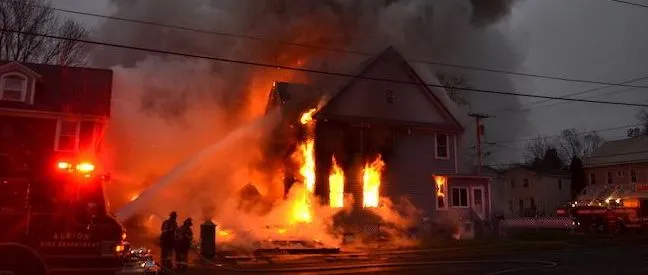In Aviva Insurance v. Haan, 2025 ONSC 3762, the Ontario Superior Court heard a duty to defend application where the insured person was found not criminally responsible (NCR) in a criminal proceeding. Justice Gibson held that the insurer had no duty to defend or indemnify Mr. Haan under his homeowner policy, because his act was intentional. The decision underscores that a criminal conviction is not required to trigger a criminal and intentional act exclusion in an insurance policy.
In August 2018, Mr. Udo Haan killed his spouse, Edresilda Haan, in their home. He then opened and ignited a gas line in the house, causing an explosion that destroyed his home and resulted in extensive damage to his neighbours’ homes. Mr. Haan was subsequently charged with first degree murder and arson under the Criminal Code of Canada.
In February 2023 at the NCR criminal proceeding, Mr. Haan admitted to all the underlying facts of the criminal charges. He admitted that he intended the damage to his home and that he understood his act could lead to arrest. Justice Sweeny at the criminal hearing considered evidence from two forensic psychologists, who testified to Mr. Haan’s psychosis and symptoms of depression. He found that Mr. Haan rationally understood that his acts would cause his spouse’s death and the destruction of his and his neighbours’ homes. Justice Sweeny determined that Mr. Haan met the requirements for NCR because he lacked the capacity to rationally decide whether his act was right or wrong. He was therefore not convicted of the offenses.
Two civil actions brought by Mr. Haan’s neighbours plead that Mr. Haan intentionally blew up his house and claimed damages for the resulting property damage to their homes. Aviva brought an application for a determination that it had no duty to defend or indemnify Mr. Haan under his homeowners’ liability insurance policy.
Aviva’s policy indemnified for legal liability for damages resulting in unintentional bodily injury or property damage. The policy expressly excluded coverage for either intentional or criminal acts. Mr. Haan argued that he did not intend to damage his neighbours’ homes, and therefore he should be covered under his policy.
Justice Gibson ruled in favour of the insurer citing that the “language of the policy is what governs” and the principles described by the Court of Appeal for Ontario in Tedford v. TD Insurance Meloche Monnex, 2012 ONCA 429:
1. The insurer has a duty to defend if the pleadings filed against the insured allege facts which, if true, would require the insurer to indemnify the insured: Monenco Ltd. v. Commonwealth Insurance Co., 2001 SCC 49, [2001] 2 S.C.R. 699 (S.C.C.), at para. 28.
2. If there is any possibility that the claim falls within the liability coverage, the insurer must defend: Nichols v. American Home Assurance Co., 1990 CanLII 144 (SCC), [1990] 1 S.C.R. 801 (S.C.C.), at p. 810.
3. The court must look beyond the labels used by the plaintiff to ascertain the “substance” and “true nature” of the claims. It must determine whether the factual allegations, if true, could possibly support the plaintiff’s legal claims: Monenco, at paras. 34-35; Scalera, at para. 79.
4. The court should determine if any claims plead are entirely “derivative” in nature, within the meaning of that term as set out in Scalera. A derivative claim will not trigger a duty to defend.
5. If the pleadings are not sufficiently precise to determine whether the claims would be covered by the policy, “the insurer’s obligation to defend will be triggered where, on a reasonable reading of the pleadings, a claim within coverage can be inferred”: Monenco, at para. 31.
6. In determining whether the policy would cover the claim, the usual principles governing the construction of insurance contracts apply, namely: the contraproferentem rule and the principle that coverage clauses should be construed broadly and exclusion clauses narrowly: Monenco, at para. 31; Scalera, at para. 70. As well, the desirability, where the policy is ambiguous, of giving effect to the reasonable expectations of the parties: Scalera, at para. 71.
7. Extrinsic evidence that has been explicitly referred to in the pleadings may be considered to determine the substance and true nature of the allegations: Monenco, at para. 36; see 1540039 Ontario Ltd. v. Farmers’ Mutual Insurance Co. (Lindsay) 2012 ONCA 210 (Ont. C.A.).
He found that because Mr. Haan admitted to the elements of the offence of arson,
Every person who intentionally or recklessly causes damage by fire or explosion to property that is not wholly owned by that person is guilty of an indictable offence and liable to imprisonment for a term not exceeding fourteen years,
he could not argue in the coverage application that he did not intend to damage his neighbours’ homes.
Mr. Haan could not obtain coverage on the basis that he did not intend damage to his neighbours’ homes (only his own) for two reasons. First, his admission at the NCR hearing was to the elements of intentionally or recklessly causing damage to his neighbours’ homes and he was bound by that admission. And, second, he was aware that his actions would cause damage to his own home (making him an intentional tortfeasor).
Therefore, the insurer had no duty to defend Mr. Haan in the civil actions of the neighbours. Justice Gibson also found that the doctrine of foreseeability could not limit Mr. Haan’s liability for the resulting damages. Justice Gibson wrote: “an intentional tortfeasor is legally responsible for all resulting damage from the act, even if the scope of the damage exceeded the actor’s intentions or was not reasonably foreseeable.”
The decision in Aviva Insurance v. Haan highlights that while there is a low threshold to trigger an insurer’s duty to defend, evidence of an intentional act by the insured is typically sufficient to exclude coverage. The decision affirms that intentional or criminal acts will evoke an exclusion in the policy, even where the consequences of the act were not anticipated or foreseeable by the insured.
Jonathan White is a lawyer at ZTGH and author of this blog. If you have a coverage question on a similar file or this decision, please contact Jonathan at 416-777-5204.












